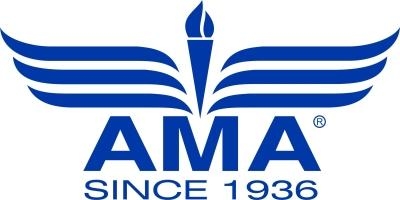Fri, Apr 01, 2016
The FAA Is Now Looking At Regulating The Operators Of Control Line Model Aircraft
ANN April 1 Special Edition
Long before radio controlled model aircraft were in operation, modelers found another way to allow the model builder to actually control their model airplane. This is called control line flying (U-Control) which has been popular since the 1930s.

In a typical U-control operation, the model aircraft is attached to control lines and a control handle that operates the elevator of the aircraft. The operator stands at a center point as the airplane revolves around in a circle. While this is not complete control of the aircraft it does provide the ability to operate the elevators and do numerous stunts some maneuvers.
Now, as the FAA has clamped more restrictions on the flying of radio controlled model aircraft and drones, they are looking at the U-Control flyer next. The FAA has determined that the common length of the control line, which is about 60 feet, is excessive and that it allows the aircraft to be too far away from the operator and fly at it too great of an altitude. Therefore, the FAA is proposing to limit the control line length to 30 feet.
While shortening the control line may not seem like a big deal, The Academy of Model Aeronautics (AMA) disagrees. They remind the FAA that as the control line gets shorter the operator must rotate at a faster speed. A typical 360 degree rotation for a control line operator is about 4 to 6 seconds. By shortening the lines, the rotation speed increases to the point that the operator may become dizzy and collapse. AMA says this could result in the operator releasing the control handle allowing the aircraft to head for parts unknown.

The FAA has quickly responded to this concern by saying that a new medical certification will be created for U-Control model airplane operators. This medical certification will test their ability to withstand rapid rotation of up to 60 revolutions per minute. They say rotation testing devices will be located at various points in the country, and will be operated by FAA medical examiners who will no longer be issuing third class medicals. The FAA also said these testing devices will be funded through registration fees charged to U-Control model aircraft. It is reported that the FAA Aeromedical Division and NASA are preparing to develop this new testing program.
The FAA will also be producing a video to discuss issues surrounding Rapid Rotation Disorientation (RRD) and the registration process for U-Control model airplanes.
More News
Unmanned Aircraft System (UAS) An unmanned aircraft and its associated elements related to safe operations, which may include control stations (ground, ship, or air based), control>[...]
Aero Linx: Cactus Fly-In The Classic Airplane Association of Arizona, Inc. (CAAA) was incorporated in Arizona as a not for profit corporation on January 10, 2014. The CAAA roster i>[...]
Also: UFC Buys Tecnams, Emirates B777-9 Buy, Allegiant Pickets, F-22 And MQ-20 The NTSB's preliminary report on the UPS Flight 2976 crash has focused on the left engine pylon's sep>[...]
Also: Bell 505 on SAF, NYPA Gets Flak For BizAv 'Abuse', FAA Venezuela Caution, Horizon Update Textron Aviation has confirmed it will be ending production of the Beechcraft Bonanza>[...]
Also: FedEx SAF, Archer Midnight Powertrain Tech, Rocket Lab Record, Perseverance Rover Find EHang has logged a major milestone in the development of its pilotless air taxi, loggin>[...]
 ANN's Daily Aero-Term (11.28.25): Unmanned Aircraft System (UAS)
ANN's Daily Aero-Term (11.28.25): Unmanned Aircraft System (UAS) ANN's Daily Aero-Linx (11.28.25)
ANN's Daily Aero-Linx (11.28.25) Airborne 11.21.25: NTSB on UPS Accident, Shutdown Protections, Enstrom Update
Airborne 11.21.25: NTSB on UPS Accident, Shutdown Protections, Enstrom Update Airborne 11.26.25: Bonanza-Baron Fini, Archer v LA NIMBYs, Gogo Loses$$$
Airborne 11.26.25: Bonanza-Baron Fini, Archer v LA NIMBYs, Gogo Loses$$$ Airborne-NextGen 11.25.25: EHang Manned Flt, Army UAVs, Starship V3 Booster Boom
Airborne-NextGen 11.25.25: EHang Manned Flt, Army UAVs, Starship V3 Booster Boom




